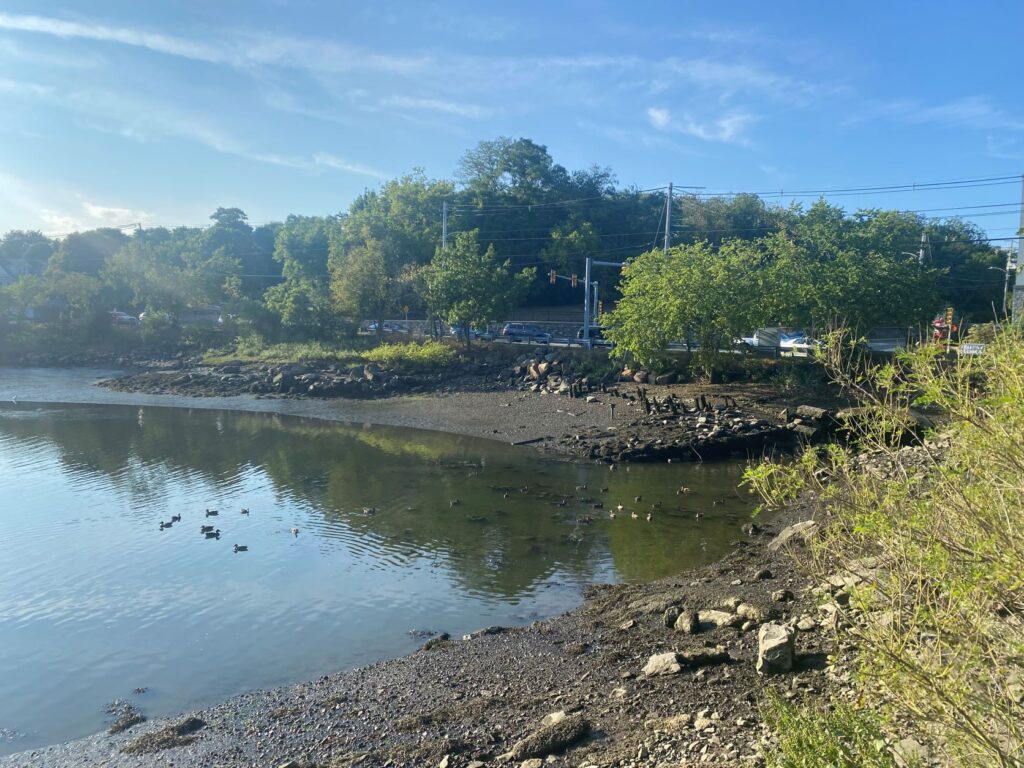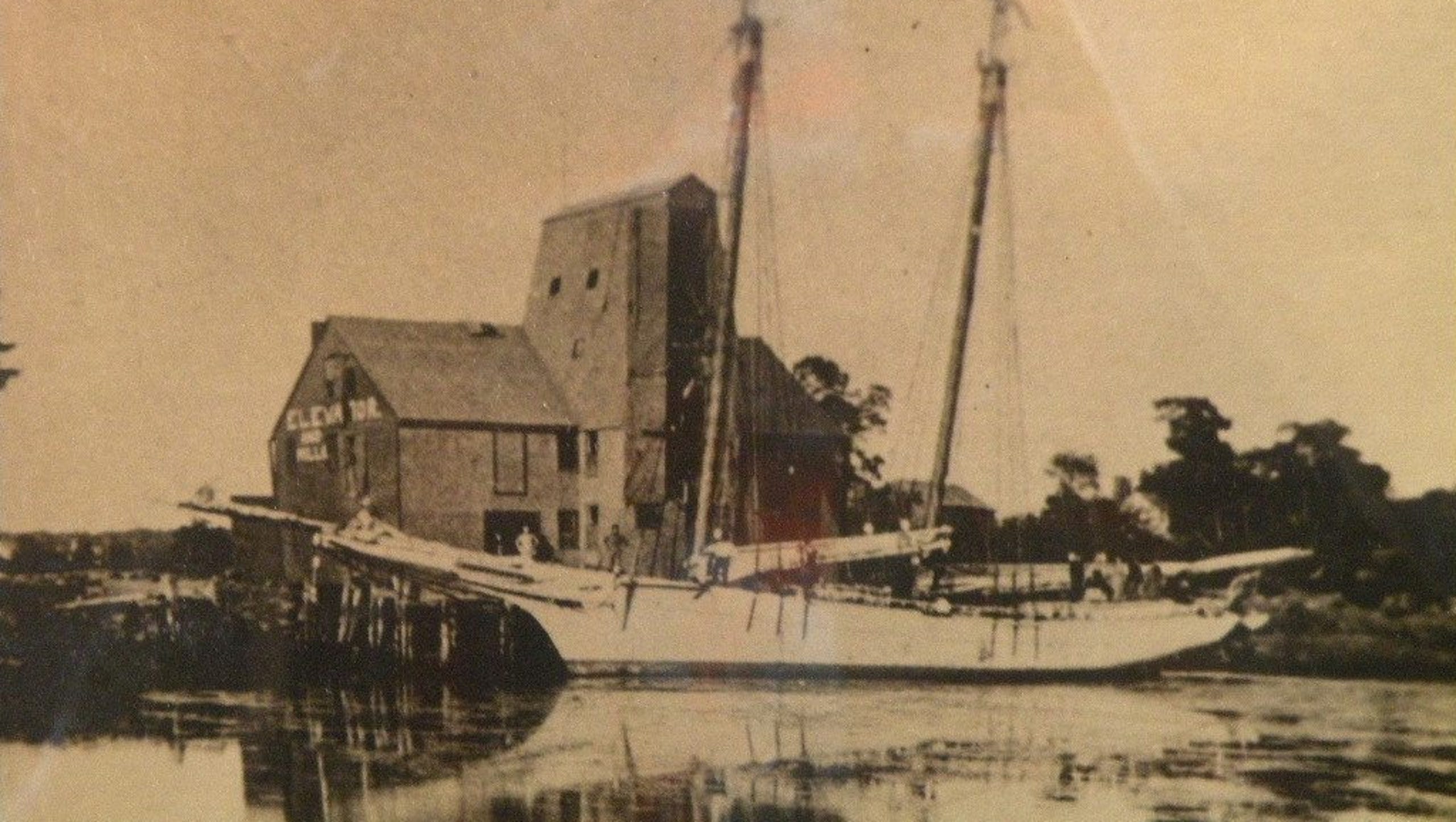Looking anew at Salem and Beverly’s Bass River
Last September, we worked with the Beverly Historical Society and Tide Mill Institute to establish a new tour program for the old Friend’s Tide Mill site. This feature near the Cummings Center fronts upon the Bass River in what is now Beverly. Yet before 1629 this area was all part of ancient Naumkeag. It was first settled by Nanepashemet’s boat-building, fishing & Indian corn-farming Native Americans. It then remained part of colonial Salem until the 1750s.
By the 1630s, early English citizens like John Winthrop who sailed the famed 1630 Arbella fleet to Salem, and 1630 sailor and carpenter John Friend of Salem were influential near the Naumkeag or Bass River. Friend built a ca. 1647-49 Indian corn-grinding tidal gristmill after obtaining Salem permissions.
Friend’s Mill or the Friend-Dodge Tide Mill was kept active by many different owners over the years. These including the Friends, Leaches, Dodges and Woodburys. (John Friend, 1640s-1660s; then John Leach; then John Dodge, Jr; then Dodge’s son-in-law Ebenezer Woodbury after 1702; then Israel Woodbury’s son-in-law Thomas Davis after 1798; finally Aaron Dodge and his son Israel W. Dodge after 1848.)
Over time, this Salem and Beverly water-powered mill underwent changes. Its dam was moved by circa 1848 downstream to the south side of Elliott Street perhaps to more easily access large ships. A tall grain elevator tower was built in 1851. Some of the 17th century mill framing was recycled into a barn structure. A circa 1880 photograph shows the mill’s tall timber grain elevator tower was situated near the middle of the south side waterfront elevation while on the west gable end, a painted sign proclaimed “elevator and mills” with the reference to mills being plural.
Each pair or run of millstones was sometimes also called a mill. The sign evidently indicated that there were at least two pairs of millstones working within the Friend-Dodge Tide Mill by the 1880s. Multiple centers of grinding provided versatility.
Grain elevators often used conveyor belts with attached metal buckets to lift great volumes of corn, wheat and/or other cereal grains to the uppermost floors of gristmills. From near the top of the mill, gravity and cloth or wood chutes conveyed the grain to be milled down to the millstones—that were all turned at high speed using local waterpower. Meal, bran and flour were produced for local consumption as well as for maritime export.
The Friend-Dodge Tide Mill was a highly significant Salem and Beverly industrial, agricultural and maritime landmark between the 1640s and 1880s. Schooners and vessels brought grain to be milled to the site. Mill Street to the east also brought farmers and commerce to the mill. The Beverly Historical Society noted “The region [near the mill] remained part of Salem until 1753.”
An 1880s fire removed all upper portions of the last tide mill on the Bass River. However surviving wooden dam remnants, pilings, and other features now visible prove the site retains high archaeological, historical and interpretive value. It would appear that an intact 19th century waterwheel or metal shafted turbine likely also survives intact below grade.
To enhance Salem and Beverly tourism and pride of place, I propose several new elements could be introduced. These might include: (1) new wayside markers for the nearby park; (2) regular tours and classes, as well as (3) archaeological inspection and documentation of the Friend’s Mill waterwheel and millstones.
In addition, to maximize community value, perhaps what is also needed is a new small floating educational center and gallery or museum that could be anchored near the Bass River tide mill remains. A new flat-bottomed vessel and/or boat mill could perhaps work to present and preserve tide mill history along with new 21st century renewable energy education exhibits (relating to tidal, solar and wind energy) to benefit multiple audiences.
Could a new mobile or moored micro-museum on the Bass River enhance education and eco-tourism here and/or in other places where historic tide mills once functioned?
Tide mills and historic tide mill sites open wonderful new doors to history and maritime history discovery. Salem and Beverly were and are fortunate to have John Friend’s Tide Mill. Look for related future articles to print to potentially discuss tide mills, boat mills, floating architecture and John Friend of Salem, the 1640s builder who constructed the first working tidal gristmill here on Salem’s and Beverly’s old Naumkeag or Bass River.



 Society
Society